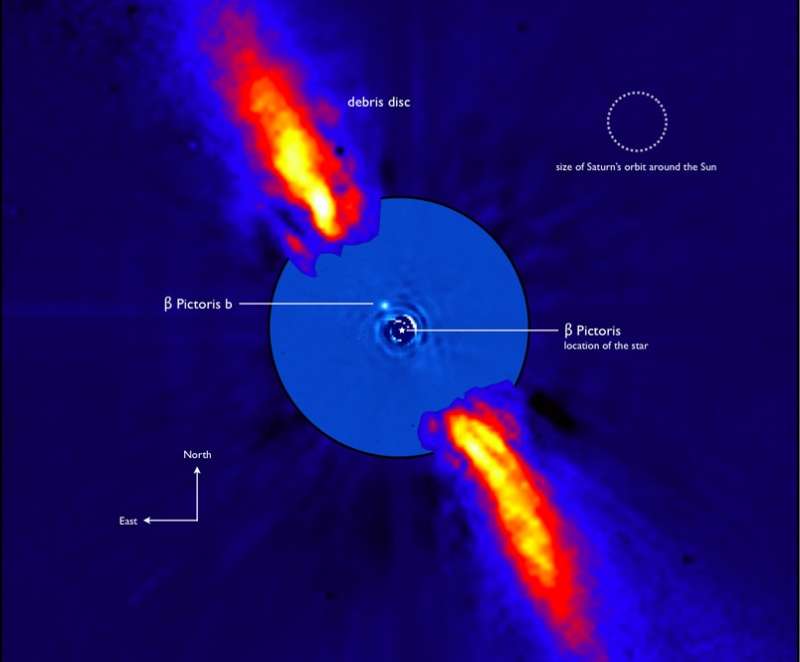Explanation: A mere 50 light-years away, young star Beta Pictoris became one of the most important stars in the sky in the early 1980s. Satellite and ground-based telescopic observations revealed the presence of a surrounding outer, dusty, debris disk and an inner clear zone about the size of our solar system -- strong evidence for the formation of planets. Now, infrared observations from European Southern Observatory telescopes incorporated in this composite offer a detection of a source in the clear zone that is most likely a giant planet orbiting Beta Pic. Designated Beta Pictoris b, the new source is more than 1,000 times fainter than the direct starlight that has been carefully subtracted from the image data. It is aligned with the disk at a projected distance that would place it near the orbit of Saturn if found in our solar system. Confirmation that the new source is a planet will come if future observations can demonstrate that the source moves in an orbit around the star. When confirmed, it will be the closest planet to its parent star directly imaged ... so far.
1999 2000 2001 2002 2003 2004 2005 2006 2007 2008 2009 2010 2011 2012 2013 2014 2015 2016 2017 2018 2019 2020 2021 2022 2023 2024 2025 |
Январь Февраль Март Апрель Май Июнь Июль Август Сентябрь Октябрь Ноябрь Декабрь |
NASA Web Site Statements, Warnings, and Disclaimers
NASA Official: Jay Norris. Specific rights apply.
A service of: LHEA at NASA / GSFC
& Michigan Tech. U.
|
Публикации с ключевыми словами:
extrasolar planet - Планеты у других звезд - экзопланета - Живописец
Публикации со словами: extrasolar planet - Планеты у других звезд - экзопланета - Живописец | |
См. также:
Все публикации на ту же тему >> | |
